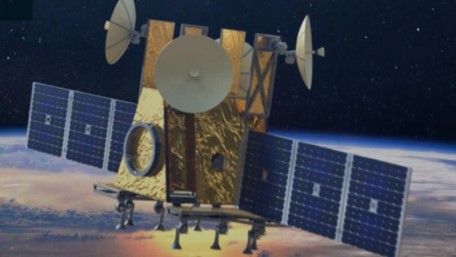A new scientific theory, which was originally published in 2017 after 35 years of research, has served to improve the governance of satellites, by providing the theoretical basis of inertial navigation. The development has been distinguished with the 2023 Aeronautical Innovation Award.
RELACIONADAS
A new scientific theory that predicts the behavior of nature on non-inertial assumptions and determines more generalized laws of motion in space has served to improve the efficiency of satellite governance through a new navigation system.
The scientific theory, developed by a Spanish team led by engineer and physicist Gabriel Barceló, transcends the framework of classical mechanics to enter the world of nonlinear dynamical systems They are very little studied and for which there is no defined conceptual structure.
The new Theory of Dynamic Interactions (TID) defines a new physical and mathematical model to predict the behavior of nature under non-inertial assumptions and to determine more generalized laws of motion in space.
New criteria
It establishes new conceptual criteria, with a more general description, for understanding the behavior of nature, which means that the current laws of dynamics could be considered special and specific cases of this theory.
TID, according to its creators, offers a new perspective on dynamics, unknown to date, which makes it possible to turn trajectories considered chaotic until now, into deterministic and modellable.
Its main conclusion is that there is still a scientific space, as yet unstructured, in dynamics and, more specifically, in the realm of rigid bodies subjected to multiple simultaneous non-coaxial rotations, which is where the TID develops.
It achieves this by reinterpreting the observable behavior of bodies when they are subjected to successive non-coaxial moments. The theory justifies the deflection of a ball’s horizontal curvilinear trajectory, it explains the closed, flat orbit of the Moon or justifies Kepler’s second law.
Satellite App
Based on this theory, the Madrid-based company Sanzar Group developed a new satellite control and guidance system that reduces its weight by 90% compared to current ones, using two rotors and a reaction wheel, thus improving its performance by more than 75%, and saving 43% in the satellite’s life cycle costs.
The new system has the ability to produce the same torque as a 100-kilogram device, but needing only 12 kilograms, which means, assuming a weight cost in space of €300,000 per kilogram, a saving of €23.4 million.
In addition, it increases control and maneuverability by more than 75% over existing control systems, as well as achieving operational cost savings of €78 million on a €100 million space system (design, development, evaluation, testing and launch costs).
Aeronautical Innovation Award
This development, which won the 2023 Aeronautical Innovation Award awarded by the Official College of Aeronautical Engineers of Spain (COIAE) at the end of last year, is based on the TID, which allowed these engineers to understand the dynamic behavior of these inertial navigators, and to understand the function of accelerometers and gyroscopes in mobile navigation.
Gabriel Barceló, lead author of the Theory of Dynamic Interactions. T21 ARCHIVE.
Speaking to Tendencias21, Gabriel Barceló explained that inertial navigators have been applied for many years in the navigation and piloting of airplanes and spacecraft, but without an adequate theoretical reference. The TID is its foundation and the theoretical justification for its correct functioning, concludes the Spanish engineer and physicist.


